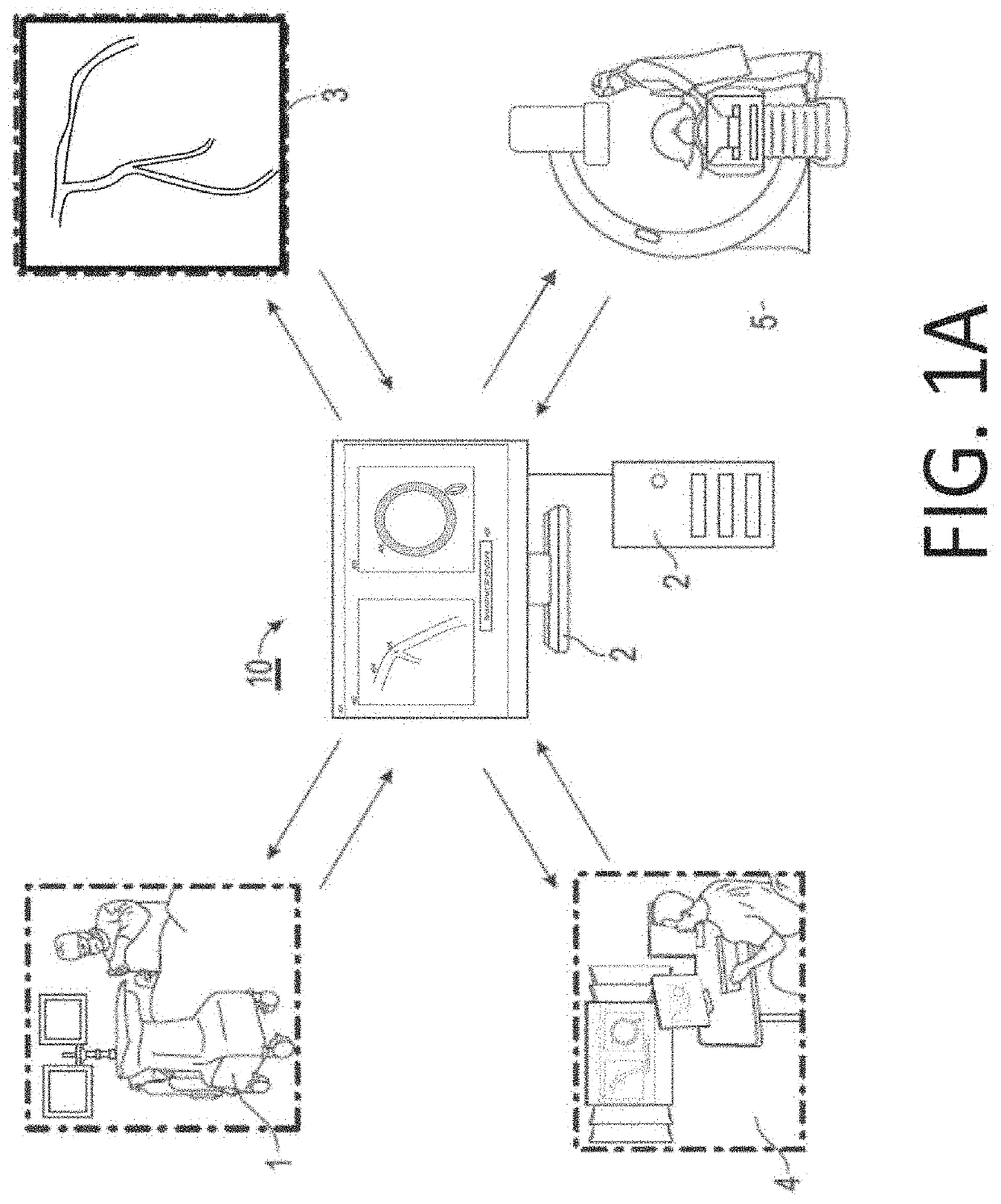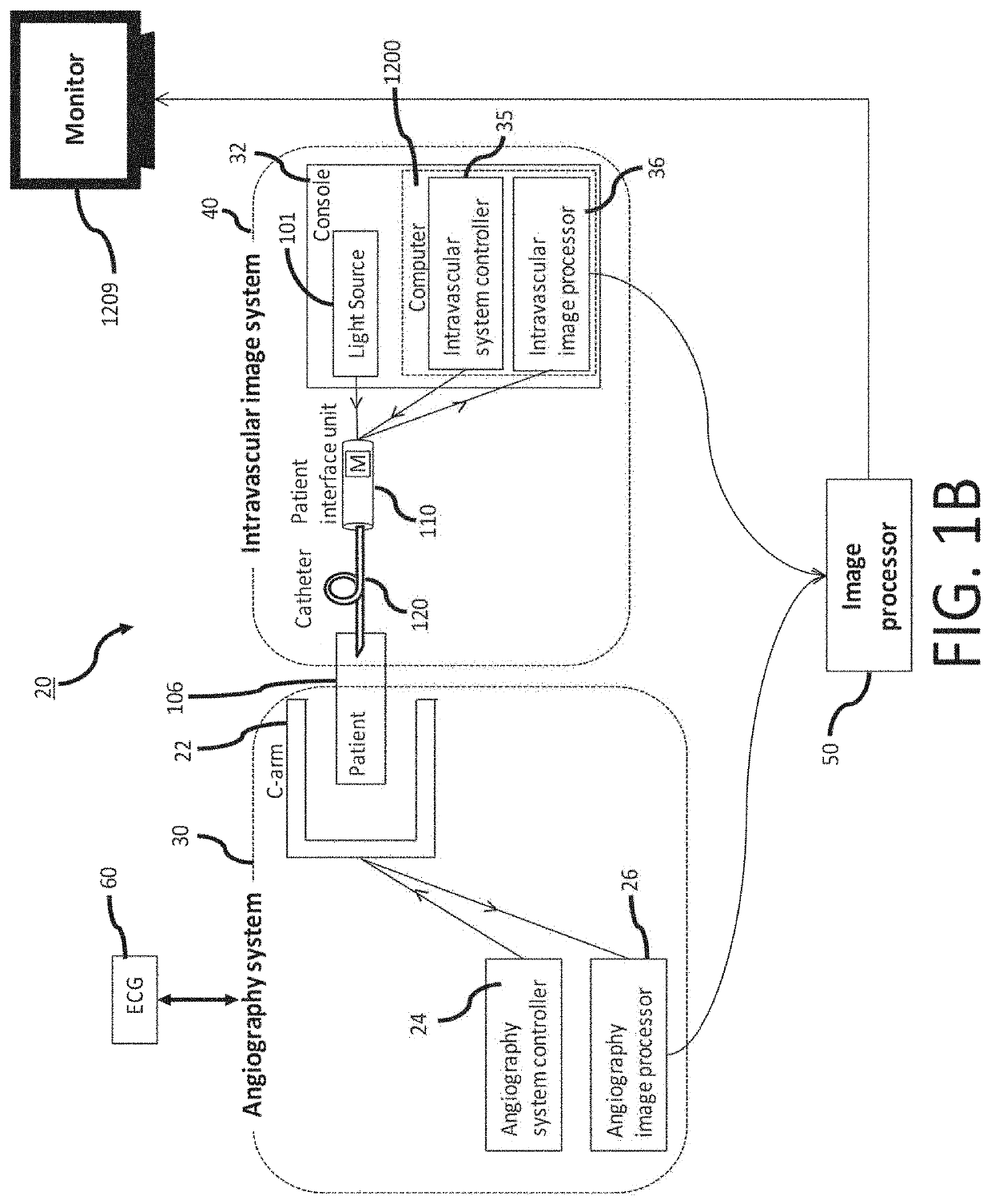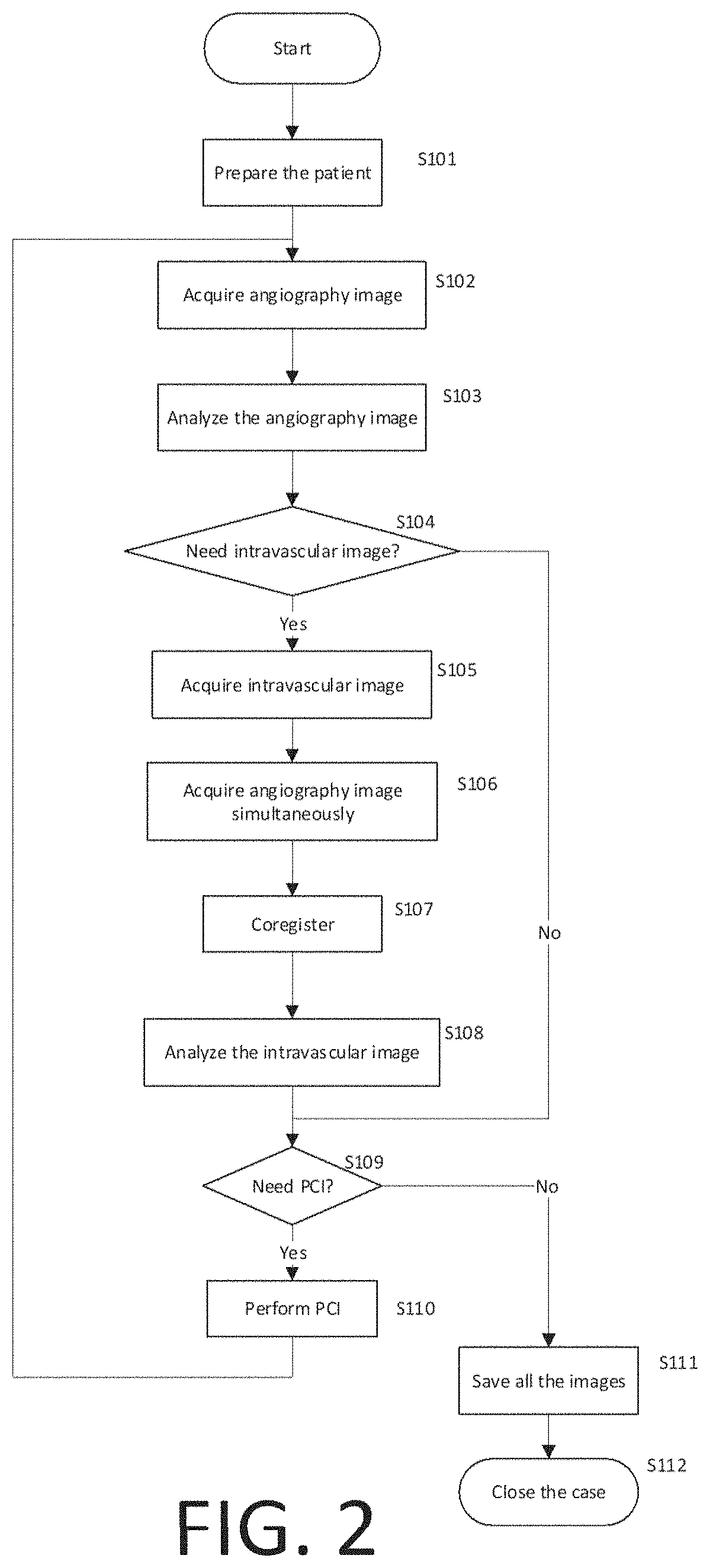Constructing or reconstructing 3D structure(s)
a three-dimensional structure and construction technology, applied in the field of optical imaging, can solve the problems of confusion in image interpretation, vasodilator prior to measurement, may not have the same accuracy between physicians, and ct-based technology is not used as a tool
- Summary
- Abstract
- Description
- Claims
- Application Information
AI Technical Summary
Benefits of technology
Problems solved by technology
Method used
Image
Examples
Embodiment Construction
[0038]One or more devices, systems, methods and storage mediums for characterizing tissue, or an object, using one or more imaging techniques or modalities (such as, but not limited to, OCT, fluorescence, NIRAF, etc.) are disclosed herein. Several embodiments of the present disclosure, which may be carried out by the one or more embodiments of an apparatus, system, method and / or computer-readable storage medium of the present disclosure are described diagrammatically and visually in FIGS. 1A through 12.
[0039]Turning now to the details of the figures, imaging modalities may be displayed in one or more ways as discussed herein. One or more displays discussed herein may allow a user of the one or more displays to use, control and / or emphasize multiple imaging techniques or modalities, such as, but not limited to, OCT, NIRAF, etc., and may allow the user to use, control, and / or emphasize the multiple imaging techniques or modalities synchronously.
[0040]As shown diagrammatically in FIG. ...
PUM
 Login to View More
Login to View More Abstract
Description
Claims
Application Information
 Login to View More
Login to View More - R&D
- Intellectual Property
- Life Sciences
- Materials
- Tech Scout
- Unparalleled Data Quality
- Higher Quality Content
- 60% Fewer Hallucinations
Browse by: Latest US Patents, China's latest patents, Technical Efficacy Thesaurus, Application Domain, Technology Topic, Popular Technical Reports.
© 2025 PatSnap. All rights reserved.Legal|Privacy policy|Modern Slavery Act Transparency Statement|Sitemap|About US| Contact US: help@patsnap.com



